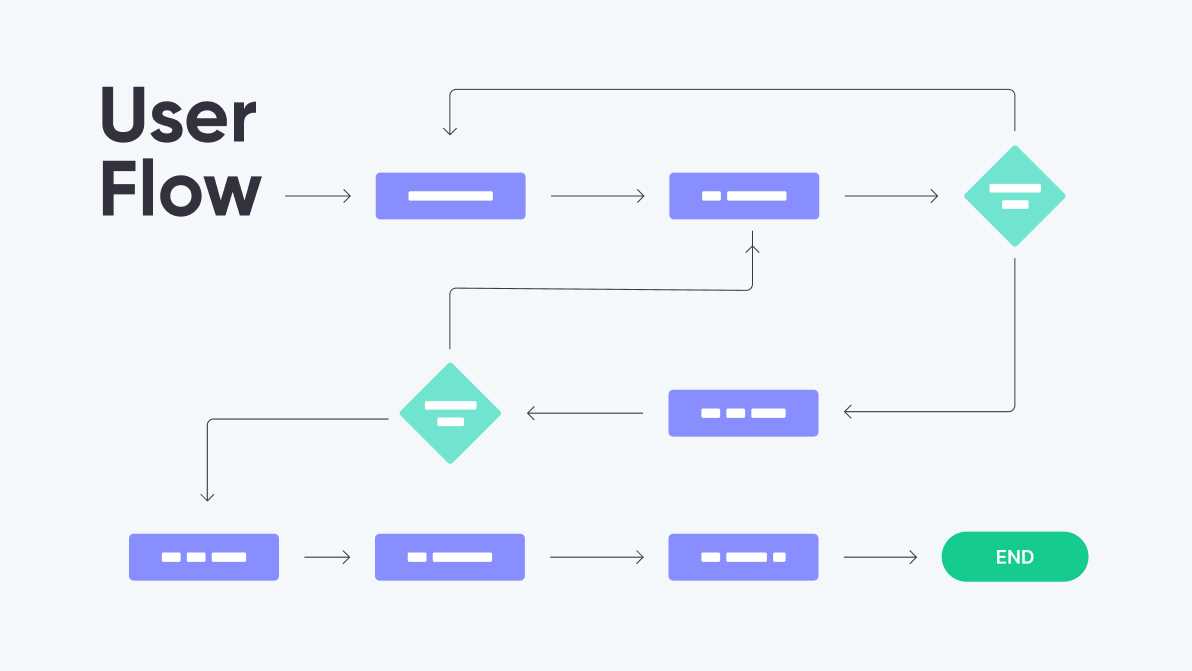Mastering User Flow: Enhancing UX and UI Design

Creating a seamless and intuitive user experience is crucial in today’s digital landscape. One of the most important aspects of UX (User Experience) and UI (User Interface) design is understanding and optimizing user flow. A well-designed user flow ensures that users can effortlessly navigate your website or app, leading to higher satisfaction and conversion rates. Let’s dive into the concept of user flow, why it matters, and how to create effective user flows in your design process.
What is User Flow?
User flow refers to the path a user takes to complete a specific task on a website or app. This path includes all the steps and interactions the user engages in, from entering the site to achieving their goal, such as making a purchase or signing up for a newsletter. By mapping out these steps, designers can identify potential pain points and create a more intuitive and enjoyable user experience.
Why is User Flow Important?
- Improves User Experience. A well-thought-out user flow simplifies the user journey, making it easier for users to find what they’re looking for and complete their desired actions without frustration.
- Increases Conversion Rates. By removing obstacles and streamlining the process, a smooth user flow can lead to higher conversion rates. Users are more likely to complete purchases or sign up for services if the process is straightforward and enjoyable
- Enhances Usability. Clear user flows help ensure that your website or app is easy to navigate, reducing the likelihood of users getting lost or confused.
- Informs Design Decisions. Understanding user flow helps designers make informed decisions about layout, navigation, and content placement, leading to a more cohesive and effective design.
Key Components of User Flow
- Entry Point. The entry point is where the user first interacts with your site or app. This could be a landing page, a homepage, or a specific page linked from an ad or search result.
- Decision Points. These are moments where users make decisions that determine their next steps, such as clicking on a menu item or a call-to-action button.
- Interactions. Interactions include all the actions users take, such as filling out forms, clicking buttons, or scrolling through content.
- Outcome. The outcome is the final goal the user wants to achieve, such as completing a purchase, subscribing to a newsletter, or downloading a file.
Creating Effective User Flows
Understand Your Users. Start by researching your target audience. Understand their needs, preferences, and behaviors. This will help you create user flows that cater to their expectations and solve their problems.
Define Clear Goals. Identify the primary goals you want users to achieve. These could be making a purchase, signing up for a service, or simply finding information. Clear goals will guide the design of your user flow.
Map Out the Journey. Use flowcharts or wireframes to visualize the user journey. Identify all possible paths users might take to reach their goals and the decision points they’ll encounter along the way.
Simplify and Streamline. Remove unnecessary steps and reduce friction wherever possible. A streamlined user flow minimizes confusion and keeps users focused on their goals.
Test and Iterate. Test your user flows with real users to identify any pain points or obstacles. Use their feedback to make iterative improvements and ensure a smooth and intuitive experience.
Examples of Effective User Flows
Netflix offers a seamless user flow for new users signing up for the service. The process is broken down into simple steps: entering an email address, choosing a plan, setting up payment, and starting to watch. Each step is clear and straightforward, ensuring users can quickly begin enjoying the service.
Airbnb’s user flow for booking accommodations is highly intuitive. Users can easily search for properties, filter results based on their preferences, view detailed listings, and book their stay with a few clicks. The process is designed to be as smooth as possible, encouraging users to complete their bookings.
Conclusion
Mastering user flow is essential for creating exceptional UX and UI designs. By understanding and optimizing the path users take to achieve their goals, you can enhance user satisfaction, increase conversion rates, and build a more effective digital product. Start by understanding your users, defining clear goals, mapping out the journey, simplifying the process, and continuously testing and iterating. With these steps, you’ll be well on your way to creating user flows that lead to a seamless and enjoyable user experience.
